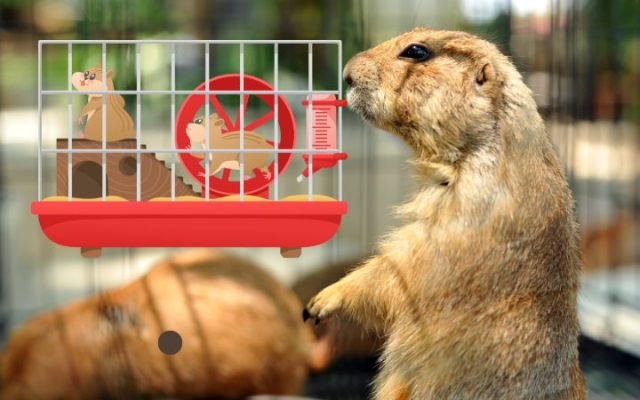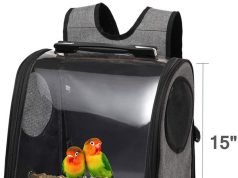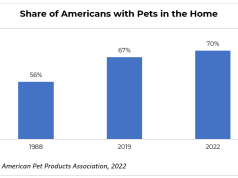Table of Contents
Introduction
Rodents, like playful hamsters, curious rats, and energetic gerbils, make great pets. As pet owners, we need to give them safe and comfy homes that meet their needs. Setting up a perfect rodent cage takes more than just putting them in any cage; it needs careful thought to make sure they are happy and healthy. This guide will give you the tips you need to create a great home for your furry friends. From choosing the right cage to understanding their behaviour, we’ll cover everything to help you make a cosy home for them. Let’s learn how to set up the best rodent cage for your beloved pets.
Choosing the Right Cage for Your Rodent
When it comes to choosing the right cage for your rodent, there are several key factors to consider to ensure their comfort and well-being. The first step is to select a cage that provides ample space for your rodent to move around freely. For example, for two rats, a cage that is at least 24 inches long, 12 inches wide, and 12 inches tall is recommended, but larger cages are always better as they allow for more room to explore and exercise [1].
Additionally, opt for a cage with a solid floor rather than wire flooring to prevent any foot injuries or discomfort for your rodent. It’s also crucial to choose a cage with secure doors and latches to prevent any potential escapes. Consider the material of the cage as well; plastic cages are easy to clean and maintain while providing a safe environment for your rodent [2]. Lastly, ensure proper ventilation in the cage by selecting one with adequate airflow while still maintaining warmth for your furry friend’s comfort. By carefully considering these factors, you can choose the perfect cage that meets all your rodent’s needs and ensures their happiness and well-being.
Essential Cage Accessories for Rodent Comfort

When setting up the perfect cage for your rodent, it is crucial to include essential accessories that prioritize their comfort and well-being. One of the fundamental accessories to include in your rodent’s cage is a water bottle. Rats, for example, are known to be playful creatures that may knock over water bowls, leading to a messy environment. By fastening a sipper water bottle securely to the side of the cage, you provide your rodents with constant access to clean drinking water without the risk of spills or contamination [3].
In addition to a water bottle, food bowls are necessary for providing your rodents with easy access to their daily meals. Opt for sturdy food bowls that are not easily tipped over by curious critters. Furthermore, consider adding a litter box to help maintain cleanliness within the cage and encourage proper waste disposal habits in your rodents. These simple yet essential accessories play a significant role in ensuring your rodent’s comfort and overall health within their living space [2].
Proper Cage Placement for Optimal Health
Proper cage placement is crucial for ensuring the optimal health and well-being of your rodent. When deciding where to position your rodent’s cage, it’s important to consider factors such as temperature, lighting, and noise levels. Rodents are sensitive to extreme temperatures, so it’s best to place their cage in a draft-free area away from direct sunlight and air conditioning vents. Additionally, rodents are most active during the night, so placing their cage in a quiet location can help reduce stress and promote healthy sleep patterns.
According to experts [2], it is recommended to avoid placing the water bottle inside the cage as rodents may chew on it. Instead, attach a plastic water bottle securely on the outside of the cage to prevent any potential hazards. By strategically placing your rodent’s cage in a suitable environment, you can create a comfortable and stress-free living space that promotes their overall health and happiness.
Maintaining a Clean and Sanitary Cage Environment
is crucial for the health and well-being of your rodent companions. Regular cleaning not only prevents odors but also helps to reduce the risk of infections and diseases. Start by establishing a routine cleaning schedule that includes daily spot-cleaning of soiled bedding, food debris, and droppings. Use a mild pet-safe disinfectant to wipe down surfaces regularly, ensuring that no harmful bacteria or germs accumulate in the cage [4].
In addition to regular cleaning, it’s essential to pay attention to the bedding material you use in the cage. Opt for dust-free bedding options such as paper-based or aspen shavings to minimize respiratory issues in your rodents. Replace soiled bedding at least once a week or more frequently if needed to maintain a fresh and hygienic living environment for your pets [3]. Remember, a clean cage is not only aesthetically pleasing but also plays a significant role in promoting the overall health and happiness of your rodent friends.
Addressing Behavioral Needs in Rodent Cage Setup
When setting up a cage for your rodent, it’s crucial to consider their behavioral needs to ensure they are happy and healthy. Rodents are naturally curious and active animals, so providing them with enrichment activities is essential. Include items such as tunnels, climbing structures, chew toys, and exercise wheels to keep your rodent mentally stimulated and physically active. These additions not only prevent boredom but also help mimic their natural habitat, promoting overall well-being.
Additionally, creating a cosy nesting area with soft bedding material allows your rodent to retreat and rest comfortably. Rodents love to burrow and create nests, so providing them with materials like shredded paper or hay can satisfy their instinctual behaviours. By addressing these behavioural needs in the cage setup, you are not only enhancing your rodent’s quality of life but also fostering a positive environment that promotes their natural behaviours and reduces stress levels [2].
Conclusion
In conclusion, setting up the perfect rodent cage takes careful planning. Choose the right cage size and type, add the needed accessories, place the cage in a good spot, keep it clean, and meet their behavior needs. Each rodent type has unique needs, so make sure to tailor the setup. By following these tips, your rodent will be happy and healthy in their new home. Your effort will strengthen the bond between you and your rodent friend.
You May Like Top 10 Best Diets for Pet Rodents
Sources:
1. https://petratties.com/rat-parenting-care/how-to-set-up-a-rat-cage-for-beginners-a-step-by-step-guide/
2. https://pethelpful.com/rodents/perfectrats
3. https://qualitycage.com/blogs/quality-rat-care/rat-cage-setup
4. https://petshun.com/article/how-to-make-a-rodent-cage











